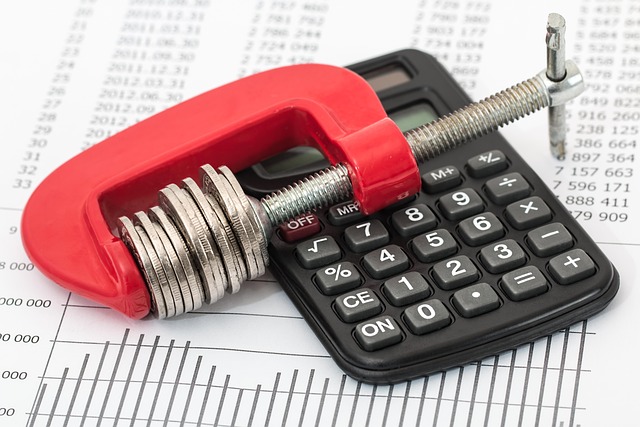An unsecured debt consolidation loan is a type of financing that combines multiple high-interest debts into one single payment, without requiring collateral. This option offers improved cash flow management and reduced monthly payments compared to maintaining several separate loans and credit card balances. However, it typically carries higher interest rates than secured loans due to the lack of physical assets as protection for lenders. Borrowers must demonstrate repayment capability to maintain a positive credit score and financial health. When choosing between secured and unsecured debt consolidation, individuals should consider their asset availability, creditworthiness, and long-term financial goals to make an informed decision.
In the world of financing, understanding the nuances between secured and unsecured loans is crucial for making informed financial decisions. This article aims to demystify these loan types, focusing on their distinct characteristics and implications. We’ll explore how secured loans, backed by collateral, offer benefits like lower interest rates while unsecured debt consolidation loans provide flexibility but come with heightened risk. By weighing these differences, individuals can navigate the financial landscape smarter, securing the best terms for their needs.
- Understanding Secured Loans: How They Work and Their Benefits
- Unsecured Debt Consolidation Loans: A Closer Look at the Risks and Advantages
- Key Differences Between Secured and Unsecured Loans for Smart Financial Decision-Making
Understanding Secured Loans: How They Work and Their Benefits
Secured loans are a type of financing where the borrower uses an asset as collateral to secure the loan. This could be anything from real estate, vehicles, savings accounts, or even valuable personal items. The collateral serves as protection for the lender in case the borrower defaults on their payments. If the borrower fails to repay, the lender has the legal right to seize and sell the collateral to recover the outstanding debt.
One common type of secured loan is an unsecured debt consolidation loan. This option allows borrowers to combine multiple high-interest debts into a single loan with a potentially lower interest rate. While it’s not backed by physical assets, it’s still considered ‘secured’ because it’s tied to the borrower’s credit history and ability to repay. The benefits include improved cash flow management, reduced monthly payments, and the convenience of having all debts consolidated under one roof.
Unsecured Debt Consolidation Loans: A Closer Look at the Risks and Advantages
Unsecured debt consolidation loans are a type of financing option designed to simplify multiple debts into a single, more manageable payment. This approach can be appealing for individuals burdened by various high-interest loans or credit card balances. By consolidating, borrowers hope to reduce their overall interest expenses and enjoy the convenience of making just one monthly payment.
However, it’s crucial to recognize that this type of loan comes with risks. Lenders offer unsecured consolidation loans without requiring collateral, which means if you default on your repayment, there are no assets at risk. Yet, this lack of security often results in higher interest rates compared to secured loans. Borrowers must carefully evaluate their financial situation and ensure they can consistently meet the new repayment terms to avoid potential negative impacts on their credit score and long-term financial health.
Key Differences Between Secured and Unsecured Loans for Smart Financial Decision-Making
When considering a loan, understanding the key differences between secured and unsecured options is crucial for making smart financial decisions. The primary distinction lies in the collateral involved. A secured loan is backed by an asset, such as real estate or a vehicle, which serves as insurance for the lender in case of default. This type of loan often offers lower interest rates and more favorable terms due to the reduced risk for the lender. In contrast, an unsecured debt consolidation loan provides funds without any collateral, relying solely on the borrower’s creditworthiness. While this may result in slightly higher interest rates, it grants borrowers greater flexibility as they don’t have to put up an asset at risk.
For instance, if you’re considering an unsecured debt consolidation loan for merging multiple debts, you won’t need to mortgage your home or vehicle. This approach can simplify your financial situation and potentially lower monthly payments. On the other hand, secured loans might be preferable when consolidating high-interest debt, as they can lead to more significant savings over time due to the reduced interest rates. Weighing these differences based on your unique financial circumstances is essential for a successful loan selection that aligns with your goals, whether it’s consolidating debts or funding a new venture.
When deciding between a secured or unsecured loan, understanding the unique characteristics of each is key. Secured loans offer lower interest rates and favorable terms due to collateral, providing peace of mind for borrowers. On the other hand, unsecured debt consolidation loans cater to those seeking relief from high-interest debts without collateral, but they come with increased risk and stricter eligibility criteria. By weighing the benefits and risks outlined in this article—including the specific advantages of understanding what an unsecured debt consolidation loan entails—individuals can make informed financial decisions tailored to their needs.
